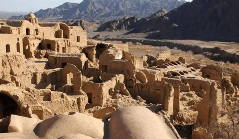Ceramic Figure Transport in Shaoguan via Remote Sensing

On September 25th, archaeologists at the Southeast University (SEU) revealed an innovative use of remote sensing technology to track the transport of ancient ceramic figures in the region of Shaoguan, China. The study provides unprecedented insights into the intricate transportation routes and methods used by ancient civilizations.
Dr. Lin Wang, the lead researcher, explained that their team employed a combination of satellite imagery and ground-penetrating radar to uncover hidden paths and structures that were once used for transporting these valuable artifacts. "This groundbreaking technology has allowed us to visualize and understand the logistics involved in moving these large, delicate ceramic figures over long distances," said Dr. Wang.
The findings suggest that the ceramic figures were primarily transported along a network of hidden trails and tunnels, carefully navigated by skilled workers. "It's fascinating to see the sophistication of the transport methods employed," noted Professor Li Hui, another member of the research team. "The use of underground passages likely minimized the risk of damage during transit."
According to historical records, these ceramic figures were often created to honor revered individuals and served as important cultural relics. Their preservation and transportation thus required meticulous planning and execution. Dr. Wang highlighted how this research not only uncovers ancient transport methods but also helps protect and conserve these historical treasures for future generations.
 LongStory.Asia The Digital Archaeological Portal
LongStory.Asia The Digital Archaeological Portal